Kodak EasyShare M580 Review
Kodak EasyShare M580
With 14MP, 8x zoom and image stabilisation, the M580 has a lot of features for the money
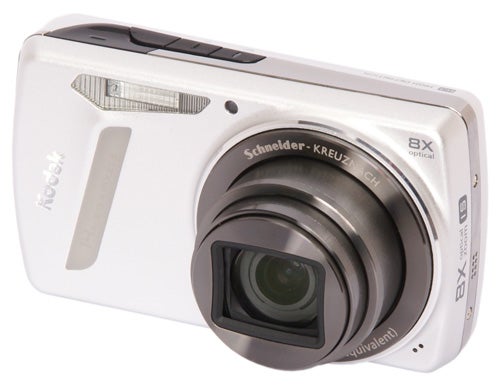
Verdict
Key Specifications
- Review Price: £107.58
The camera-buying public (that’s you folks out there) are a demanding lot. You want all the latest advanced features such as long zoom wide angle lenses, high resolution sensors, HD video recording and mechanical image stabilisation, all in a slim and attractive package, and you want all that for the cheapest possible price. Well now you can have it, because the Kodak EasyShare M580 offers all of those features for less than £110. Surely there must be a catch?
The EasyShare M580 was launched last year at the same time as the 10x zoom Z950, and is the current flagship of Kodak’s consumer M series. Considering its bargain price it’s a well made and surprisingly well specified camera, with a 14 megapixel 1/2.3 inch CCD sensor, an 8x zoom Schneider-Kreuznach lens, a 7.5cm (3.0 inch) 230k LCD monitor and built-in optical image stabilisation, all wrapped up in a strong all-aluminium body.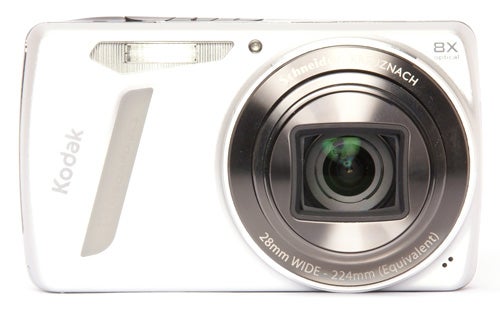
Kodak’s compact cameras have historically been a bit hit-or-miss in the style department but the M580 is a good looking model. It’s a bit large to be considered an ultra-compact, but it is quite slim. The body measures 100.8 x 59.5 x 25.7mm and weighs 165g, which is very light for its size, and the big zoom lens folds away almost flush with the body, so it slips easily into a pocket. It’s available in brown, purple or the anodised silver seen here. It’s probably not going to evoke jealous stares from Canon IXUS owners, but it’s not a camera you’ll be embarrassed to be seen with.
The overall body shape of the M580 is a wedge with the thick end on the right, with a narrow rubber strip inset into a small raised feature on the front that serves as a handgrip, making the camera easy and comfortable to hold securely. The rear panel control layout is basic but sufficient, and the controls are labelled with small but clear and reasonably obvious symbols, presumably so that the same model can be sold all over the world without the need for re-printing the control panel.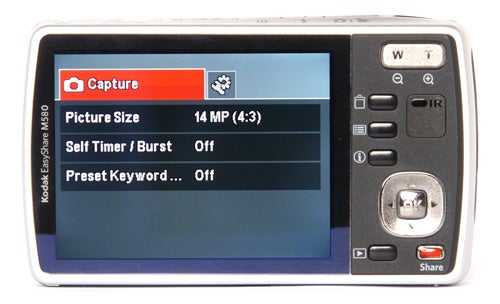
The M580 is a very simple point-and-shoot camera with only the most basic set of options and just three main shooting modes. Program Auto allows manual adjustment of ISO setting, white balance and a limited range of options such as focus mode, face detection and a handful of colour pre-sets. The Scene Mode offers 20 scene programs, with all the usual suspects such as portrait, landscape, close-up, sunset, sport and more. However whenever it is switched on the M580 automatically sets itself to the all-auto Smart Capture mode, which offers almost no user options at all. If you prefer to have some control over your camera this power-on default can quickly become annoying, but it is a boon for novice users who prefer the camera to do everything for them.
Another annoyance is the top panel control layout. It has four buttons for power, flash mode, shooting mode and the shutter button, but they are all flat black plastic and mounted flush with the camera body, making it very difficult to distinguish them by touch or sight. It may look sleek and stylish but it is very fiddly, and astonishingly poor design from a company that has been making consumer cameras for well over a century.
Like nearly all new cameras the M580 offers HD video recording, shooting at a maximum resolution of 1280 x 720 pixels at 30fps, recording in the QuickTime MOV H.264 format, with mono audio recorded via a small microphone on the front panel. It has to be said that the video quality is not that good, but the sound recording is quite directional.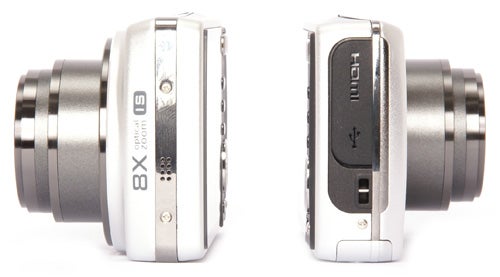
The M580 does have a couple of unusual features. One is a built-in keyword system, in which keywords such as “wedding”, “holiday”, “birthday” etcetera can be added to the EXIF data of the image at the time of shooting. New keywords can be added by the user. The supplied EasyShare software includes the ability to search for pictures using these keywords. Another unusual idea is that the Kodak EasyShare software, normally supplied on a disk in the box, is instead built into the camera. The first time the camera is connected to a computer via the USB lead it prompts you to install the software direct from the camera. After this is done, photo can be shared with social network sites such as Facebook, YouTube, Flikr and ohers direct from the camera. The battery is also charged via the USB connection, although a mains adapter is supplied.
The M580’s overall performance isn’t going to win it any prizes, but it is surprisingly good for a budget camera. It starts up in just under four seconds, which is a little bit on the slow side, but in single-shot mode its shot-to-shot time is approximately 2.2 seconds, which isn’t too bad at all. It doesn’t have a long-period continuous mode, just a three-shot burst in just over four seconds, which isn’t really that much faster than shooting in single-shot mode.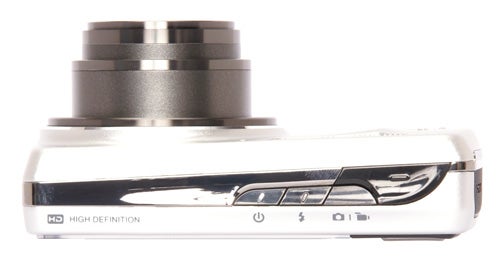
The camera could have faster performance if only the autofocus system was a bit better. It is reliable enough, but even in good light it is quite slow, and its low light performance is a bit disappointing. It has an AF assist lamp, but it only has an effective range of about a metre, and beyond that range the camera has a major problem focusing in twilight brightness.
Picture quality is, to be honest, not brilliant. Schneider-Kreuznach is a respected name in optical manufacturing, but while the lens on the M580 avoids barrel distortion at wide angle it does suffer from quite noticeable chromatic aberration around the edges of the frame, and the overall sharpness could be a bit better too. The overall level of detail is not helped by the rather fierce compression. Dynamic range is actually surprisingly good, but colour rendition is quite garish, especially blue skies which come out looking unnaturally bright. Noise is also a problem, and although results at up to 200 ISO are acceptable for a cheap camera, at 400 ISO and above colour distortion and obtrusive noise rob the images of any fine detail.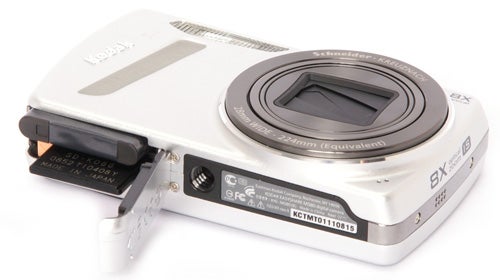
”’Verdict”’
For a budget price the Kodak EasyShare M580 offers superior build quality, a good range of features, decent performance and very simple operation, in a slim and attractive body. It is let down only by its lacklustre low light focusing, garish colour rendition and poor high-ISO results.
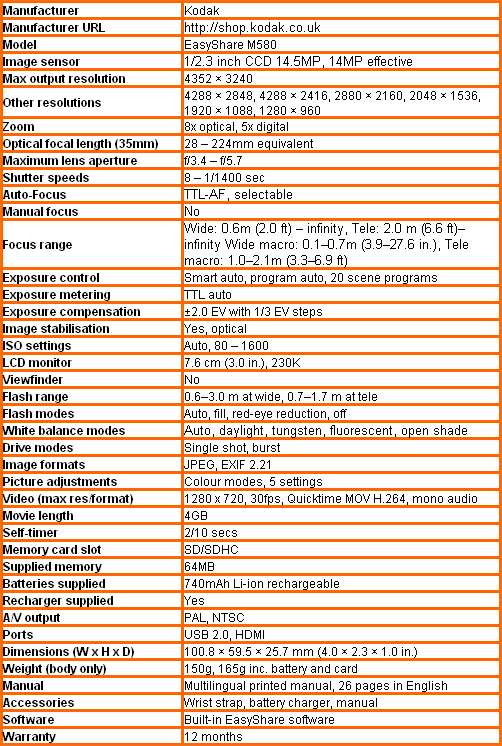
”Over the next few pages we show a range of test shots. On this page the full size image at the minimum and maximum ISO settings have been reduced to let you see the full image, and a series of full resolution crops have taken from original images at a range of ISO settings to show the overall image quality. These pictures were taken indoors using reflected natural light ”
—-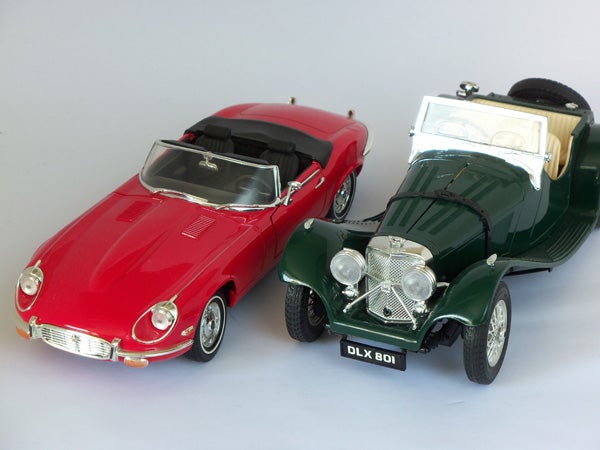
This is the full frame at minimum ISO.
—-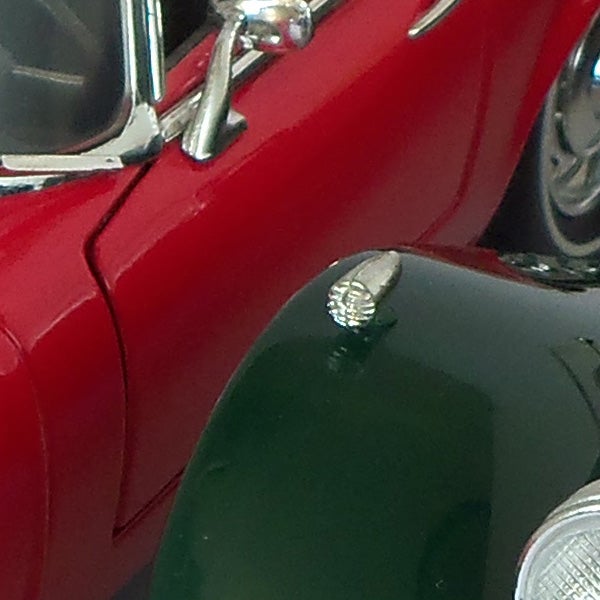
At 80 ISO there’s no noise and colour gradients are smooth, but the image does look over-compressed.
—-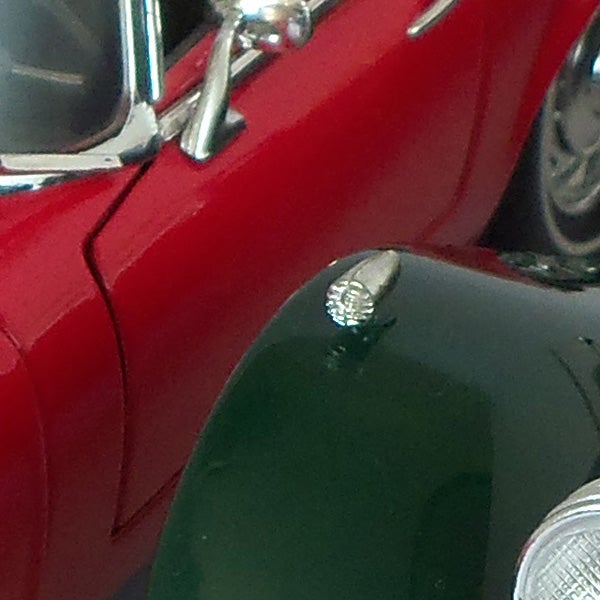
Not much difference at 100 ISO.
—-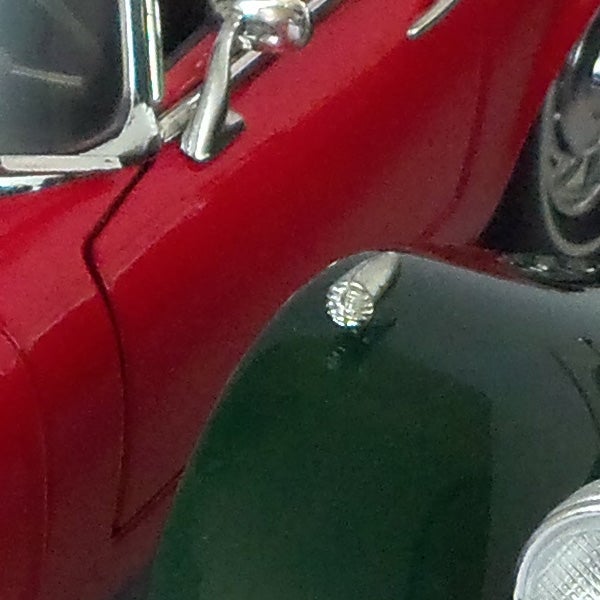
Noise reduction is starting to affect picture quality at 200 ISO.
—-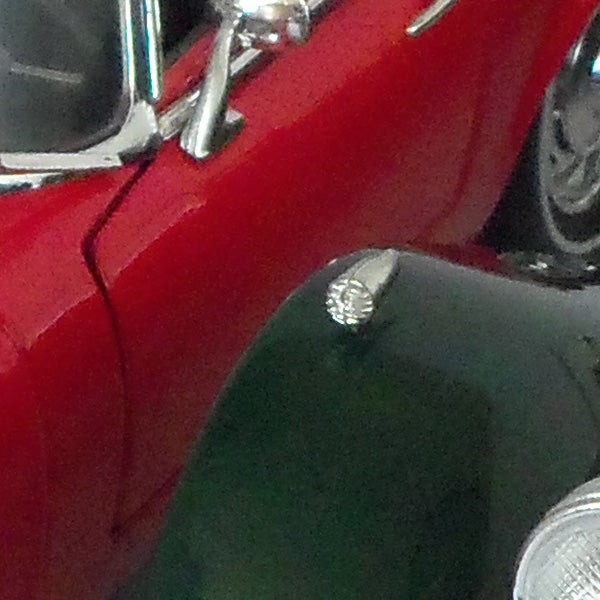
At 400 ISO noise is becoming a problem, with patchy colour and reduced detail.
—-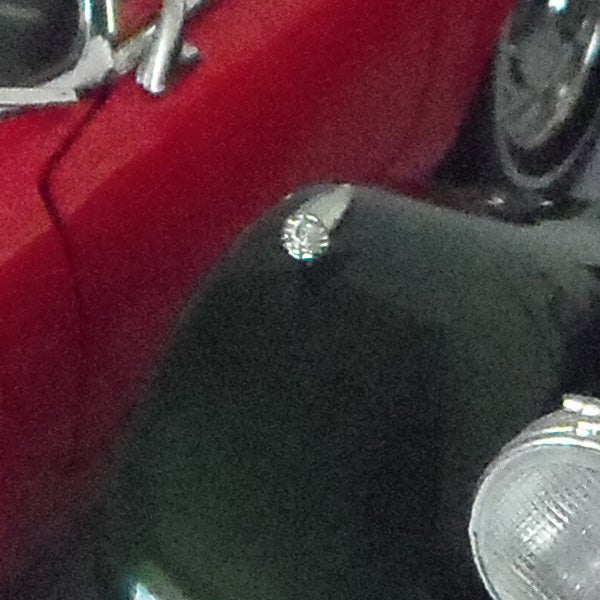
Lots of noise at 800 ISO.
—-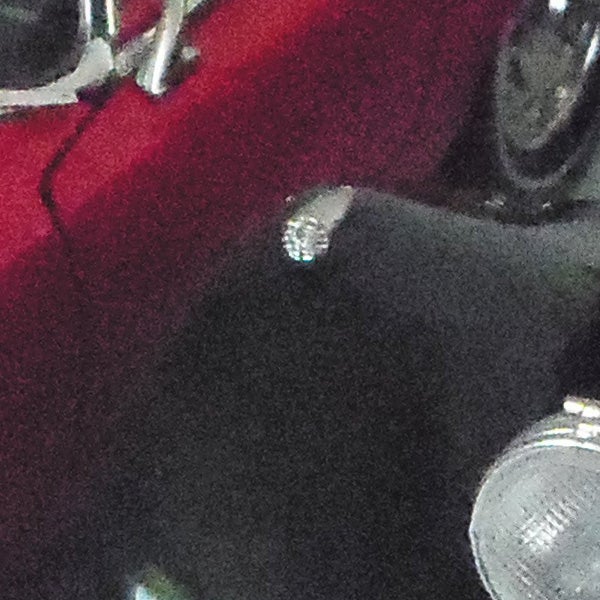
Picture quality at 1600 ISO is terrible as usual.
—-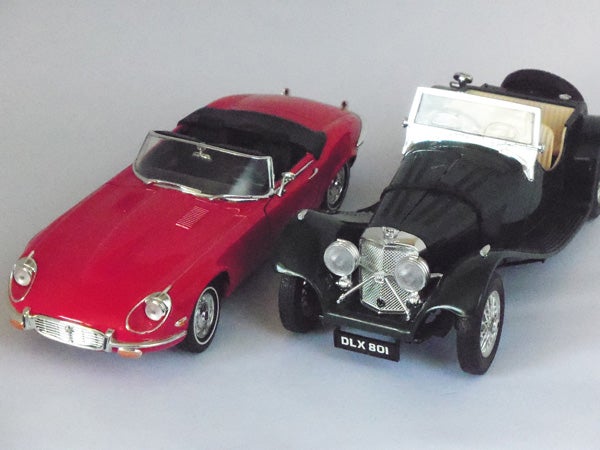
This is the full frame at maximum ISO.
—-
”A range of general test shots are shown over the next two pages. In some cases, the full size image has been reduced for bandwidth purposes, and a crop taken from the original full resolution image has been placed below it to show the overall image quality. Some other pictures may be clicked to view the original full-size image. ”
—-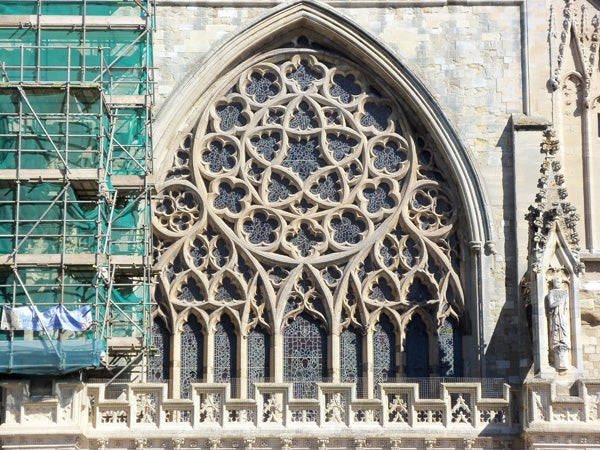
Here’s the usual detail test shot of the West Window of Exeter Cathedral, for you to compare with other cameras. See below for a full res crop, or click to see the whole picture. File size 4.2MB
—-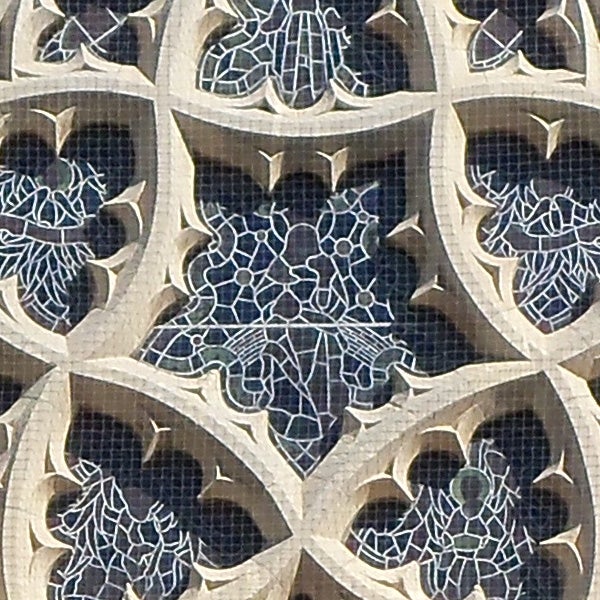
The 14MP sensor picks up plenty of detail in good light, but the severe compression loses quite a lot of it.
—-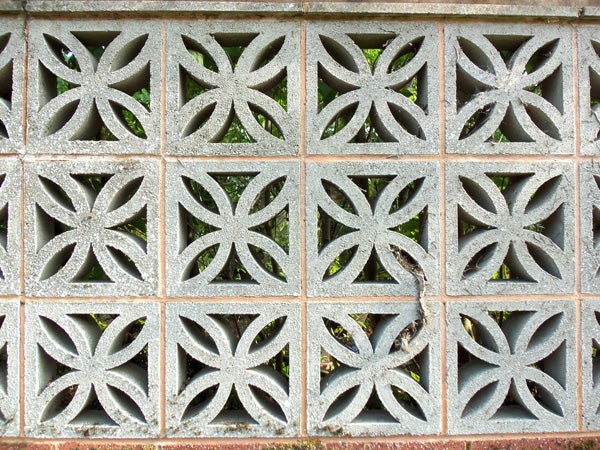
The lens produces very little barrel distortion at wide angle.
—-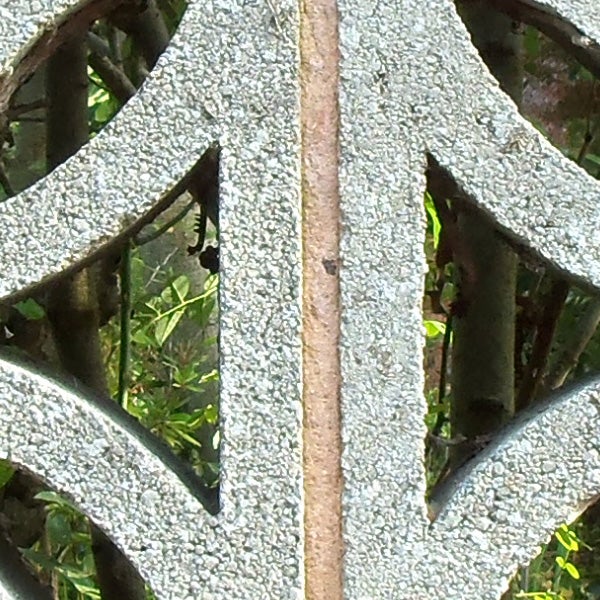
Centre sharpness could be better.
—-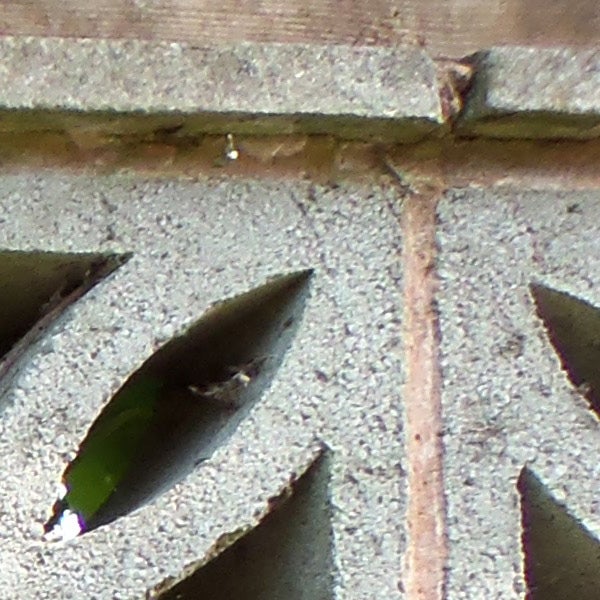
Significant chromatic aberration at the edges of the frame.
—-
”Here are some general test shots to help evaluate the camera’s overall image quality, including dynamic range, colour rendition and the zoom range of the lens. Some pictures may be clicked to download the full size original image. ”
—-
The wide angle end is equivalent to 28mm.
—-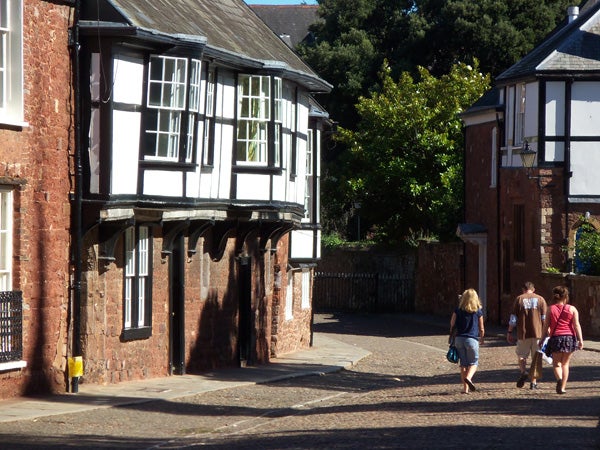
The telephoto end is equivalent to 224mm
—-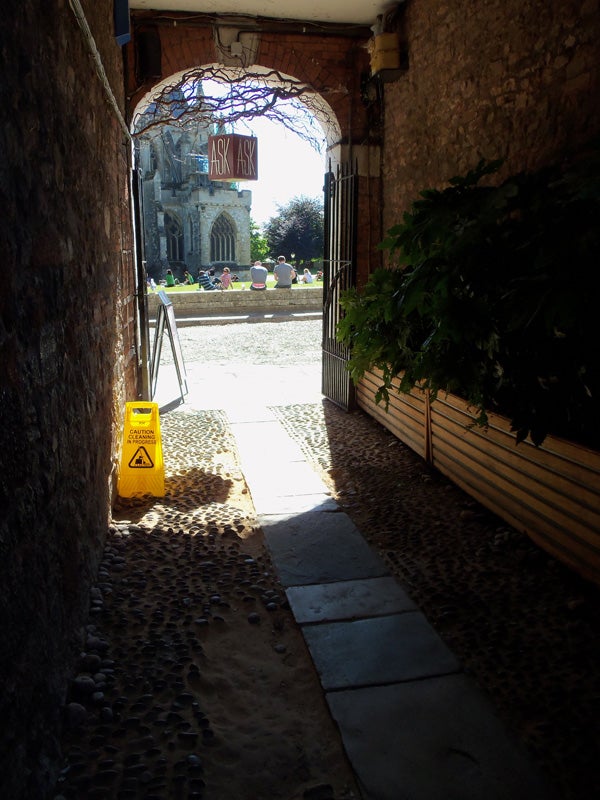
Dynamic range is actually not too bad for a 14MP small-sensor camera.
—-
Colour reproduction is rather garish.
—-
Trusted Score
Score in detail
-
Value 9
-
Image Quality 6
-
Build Quality 8
Features
| Camera type | Digital Compact, Digital SLR |
| Megapixels (Megapixel) | 14 Megapixel |
| Optical Zoom (Times) | 8x |
| Image Sensor | 1/2.3-inch CCD |
| Optical focal length | 28-224mm equivalent |
| Shutter speed | 8- 1/4000 |
| Auto focus | TTL-AF, selectable |
| Manual focus | No |
| Max output resolution | 4352x3240 |
| Other resolutions | 4288x2848, 4288x2416, 2880x2160, 2048x1536, 1920x1088, 1280x960 |
| Focus range | Wide: 0.6m to infinity, Tele: 2m to infinity, Wide macro: 0.1 to 0.7m, Tele macro: 1 to 2m |
| Exposure control | Smart auto, program auto, 20 scene programs |
| Exposure metering | TTL auto |
| Exposure compensation | +/- 2EV with 1/3 EV steps |
| Image Stabilisation | Optical |
| ISO settings | Auto, 80-1600 |
| LCD Monitor | 3-inch 230k |
| Viewfinder | No |
| Flash range | 0.6 to 3m at wide, 0.7 to 1.7m at tele |
| Flash modes | Auto, Flash On, Flash Off, Red-eye reduction, fill |
| White balance modes | Auto, daylight, fluorescent, tungsten, open shade |
| Drive modes | Single shot, burst |
| Image formats | JPEG, EXIF |
| Picture adjustments | Colour modes, 5 settings |
| Video (max res/format) | 1280x720, 30fps, Quicktime MOV H.264, mono audio |
| Movie length | 4GB |
| Self timer | 2/10 secs |
| Memory card slot | SD,SDHC |
| Supplied memory | 64MB |
| Batteries supplied | 740mAh Li-ion rechargeable |
| Charger supplied | Yes |
| A/V output | PAL, NTSC |
| Charging/Computer Connection | USB 2.0 |
| HDMI | Yes |
| Manual | Multilingual printed manual, 26 pages in English |
Physical Specifications
| Dimensions Width (Millimeter) | 100.8mm |
| Depth (Millimeter) | 59.5mm |
| Weight (body only) (Kilogram) | 150G (165g including battery and memory card)kg |

